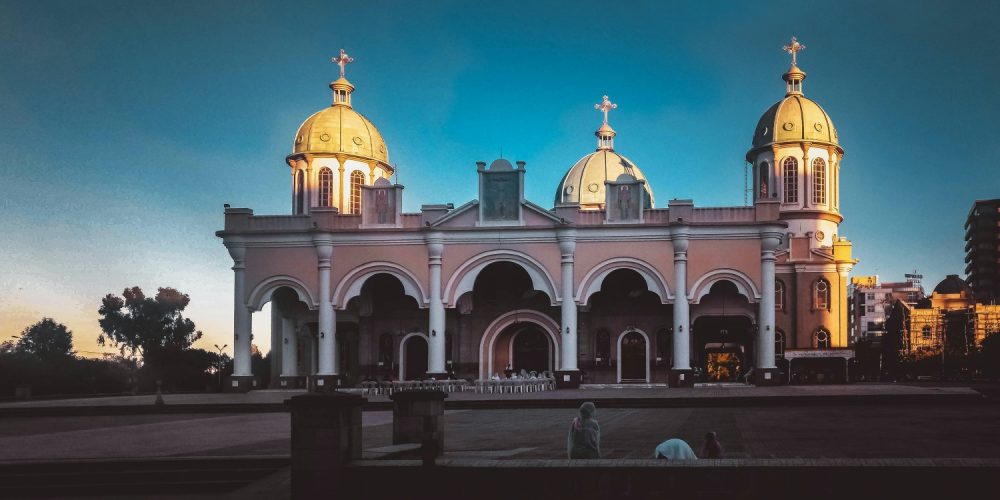
Ethiopia is a country with a rich and diverse religious heritage. It is home to followers of various faiths, mainly Christianity, Islam, Judaism and traditional African religions. In this blog post, we will explore the history, beliefs and practices of these religions, as well as the churches that represent them in the urban areas of Ethiopia.
Bole Michael Othodox Church in Addis Ababa, Ethiopia – Image by Hunde Gemechu
Christianity was introduced to Ethiopia in the 4th century CE by Syrian missionaries who converted the king of Aksum, Ezana, and his court. Aksum was a powerful kingdom that controlled much of present-day Ethiopia and Eritrea, as well as parts of Sudan, Yemen and Saudi Arabia. Christianity became the official religion of Aksum and spread throughout the region.
The Ethiopian Orthodox Tewahedo Church (called Tewahdo in Ethiopia) is one of the oldest organized Christian bodies in the world. It belongs to the Oriental Orthodox family of churches, which rejected the Council of Chalcedon in 451 CE over a Christological dispute. The Ethiopian Orthodox Church has its own unique liturgy, theology, art and architecture. It also claims to possess the original Ark of the Covenant, which is said to be kept in the Church of Our Lady Mary of Zion in Aksum.
The Ethiopian Orthodox Church has a dominant role in the culture and politics of Ethiopia. It has served as the official religion of the ruling elite until the demise of the monarchy in 1974. It also has served as the repository of Ethiopia’s literary tradition and its visual arts. The core area of Christianity is in the highlands of northern Ethiopia, but its influence is felt in the entire country. According to the 2007 census conducted by the Ethiopian Central Statistical Agency, 43.5% of Ethiopians follow the teachings of the Ethiopian Orthodox Church.
There are also other Christian denominations in Ethiopia, such as Roman Catholics, Protestants and P’ent’ay (also known as Ethiopian Evangelicals). These groups emerged in the 19th and 20th centuries as a result of missionary activities and social movements. They have different doctrines and practices from the Ethiopian Orthodox Church, but they share a common faith in Jesus Christ as their Lord and Savior. Together, they make up about 23.3% of Ethiopia’s population according to the same census.
The churches that represent Christianity in Ethiopia are diverse and varied. They range from ancient rock-hewn churches carved out of mountains, such as Lalibela, to modern cathedrals and chapels built with bricks and mortar, such as St. George’s Cathedral in Addis Ababa. Some churches are adorned with colorful paintings and icons depicting biblical scenes and saints, while others are simple and austere. Some churches have domes and crosses, while others have spires and bells. Some churches have large congregations and choirs, while others have small groups and soloists. Some churches follow a strict liturgical calendar and ritual, while others have more flexible and spontaneous forms of worship.
Islam was introduced to Ethiopia in the 7th century CE by Muslim refugees who fled from persecution in Mecca. They were welcomed by the king of Aksum, who granted them protection and freedom of religion. The first mosque in Africa was built in Negash, where some of these refugees settled. Islam spread gradually among the local population through trade, migration and intermarriage.
Islam is the second most followed religion in Ethiopia, with about 33.9% of Ethiopians being Muslims according to
the 2007 census conducted by the Ethiopian Central Statistical Agency.
Most Muslims in Ethiopia belong to the Sunni branch of Islam, which follows
One reply on “What are Ethiopia’s religions? Which churches do you find in the cities?”
Muchas gracias. ?Como puedo iniciar sesion?